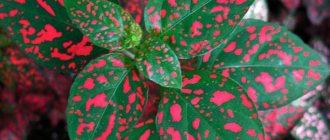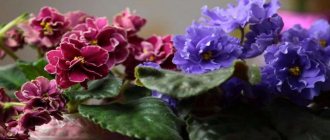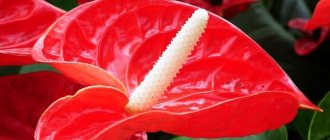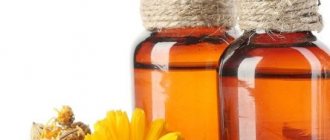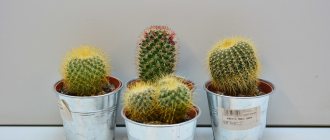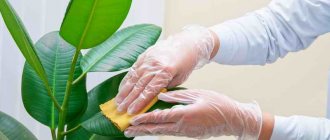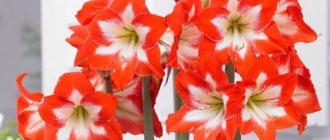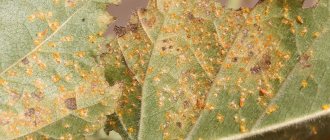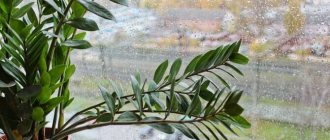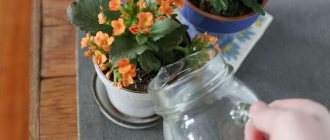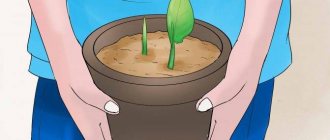Growing Kalanchoe at home. Signs and recommendations of Feng Shui.
Plants play different roles in human life. They are medicine, weeds, and pets. Among the latter, Kalanchoe occupies a worthy place among housewives.
It grows and produces long-lasting blooms in response to reasonable care and attention. Although it is recognized as an unpretentious plant in terms of watering, fertilizing and replanting.
Is this really so? Let’s continue to look into the article.
What is Kalanchoe blooming, what it looks like, how it blooms: description
flowering Kalanchoe in pots
Kalanchoe in our latitudes are hybrids of plants from Madagascar. It belongs to the succulent family Crassulaceae. In total, more than 200 of its species are known.
Flowering Kalanchoe has gained maximum distribution and popularity in varieties such as:
- Blossfeld
- pinnate
- Daigremont
- single-flowered
External parameters of the plant:
- low up to 30 cm
- the leaves are large, fleshy, elastic, oval in shape with a serrated edge
- flowers are small, connected in inflorescences
- flower shape - tube with 4 petals
- during the flowering period, cover the surface of the plant with a dense carpet
- range - from white to rich red
Description
Kalanchoe grows in the tropics, namely in Africa, America and finally in Southeast Asia. Belongs to the Crassulaceae family. These are a variety of shrubs, subshrubs, herbaceous perennials, and succulents.
The Degremona and Kalanchoe pinnate varieties contain more medicinal properties than others. They contain a lot of organic acids, polysaccharides and flavonoids. Moreover, they are sources of useful microelements and vitamins.
Degremona is a herbaceous perennial with a straight, non-branching stem and thick leaves in the form of a triangle, along the edges of which brood buds are formed. Mini plants already have small roots, so after they fall off, they immediately sprout roots.
Kalanchoe Degremona
Pinnate is also a herbaceous perennial with succulent leathery leaves with jagged edges. Unlike Degremon, it is not viviparous.
Kalanchoe pinnate
The homeland of these species is the island of Madagascar.
Kalanchoe - can you keep it at home: the meaning of the flower, signs and superstitions
A blooming Kalanchoe in an eco-bag is an excellent gift for all occasions.
Kalanchoe has medicinal qualities and is beneficial for humans. Therefore, be sure to get yourself this plant. It is quite patient and accepts minimal self-care with gratitude.
As for signs, they all have a positive meaning. Kalanchoe is not a magnet for dark forces, outbreaks of quarrels and abuse, diseases and troubles.
Vice versa:
- Kalanchoe absorbs heavy energy accumulated at the end of your working day
- cleanses the aura of the house, removes negativity from space
- promotes harmonization of family relationships
- encourages changing negative thoughts to positive ones
- brings the family together for pleasant conversations
- if your Kalanchoe blooms, it means that harmony, peace and harmony reign in the house
However, think about it if:
- your green pet suddenly began to fade and died, which means he took upon himself an external dark attack aimed at destroying the harmony of your family,
- it has been living with you for many years and does not bloom, which means there is a lack of sincerity, depth of relationships, and harmony in your family.
Healing properties of Kalanchoe
Kalanchoe: home care and main family species
The plant has watery leaves rich in juice. They contain the active substances for which Kalanchoe is so valued. The juice is used for medicinal purposes. In particular, the leaves of the plant contain enzymes and organic acids, as well as flavonoids - special substances that affect the tone of the heart muscle.
Leaves of Kalanchoe Blossfeld
One leaf of the plant contains:
- vitamin C and P;
- tannins;
- flavonoids;
- mineral salts;
- a variety of macro and microelements (copper, manganese, calcium, aluminum, potassium);
- organic acids, etc.;
- polysaccharides;
- silicon;
- iron;
- magnesium.
These microelements promote healing, soothe irritation and inflammation. Thanks to them, burns, wounds and frostbite can be treated.
For your information! In ancient times, the Kalanchoe plant was used as a medicine by many peoples. The famous poet I. Goethe once wrote to his friends: “Starting with one leaf, the Kalanchoe grows many new shoots, so with one true love you can draw new happiness.”
Also, Kalanchoe medicinal purifies the air and disinfects. That is why it is useful to keep it in homes where allergy sufferers live. In addition, it fights the flu virus and other infections.
Kalanchoe is used in gynecology (during childbirth, during reconstructive operations). In dentistry, it helps cure putrefactive bleeding.
In cosmetology, its juice is used to remove dark circles under the eyes, heal minor wounds after operations, and cracks. For problem skin, rubbing a few drops of juice into irritated areas (acne, inflammation, eczema) helps.
Kalanchoe juice is used in many areas. In particular, in:
- surgery, including plastic surgery. From the juice of the plant, there is an acceleration of the regeneration of skin properties, cleansing wounds of pathogenic organisms, as well as a local anesthetic effect;
- ophthalmology. In this area, Kalanchoe is used for diseases of the cornea, keratitis, etc.;
- dentistry. This plant is good for treating stomatitis, gingivitis, periodontal diseases, etc.
Kalanchoe has the following properties:
- antiseptic;
- anti-inflammatory;
- healing;
- bactericidal.
For your information! If the flower is cared for correctly at home, the healing properties of its juice are preserved. If the flower lacked something or the plant was damaged, the properties become less pronounced.
How to water Kalanchoe in winter and summer at home?
watering can with water near pots with Kalanchoe
Since Kalanchoe is not a picky plant, caring for it is not difficult.
On the other hand, like any other green resident of your home, it is sensitive to excess moisture, cold, and a complete lack of sunlight.
In summer, water Kalanchoe sparingly once a week.
- Choose water that has stood indoors for a day.
- Avoid pouring cold tap water under the roots of the Kalanchoe plant.
- Leave the plant stem without drops of moisture so that it does not provoke disease.
- Soak the soil with moisture so that water does not remain on the surface or in the base of the pot. In the second case, pour it out immediately.
- Remember that Kalanchoe comes from the tropics, so it tolerates a short period of drought more easily than an excessive amount of water in the soil. After all, it tends to accumulate moisture in its leaves and stems, which it uses during dry periods.
In winter, reduce the frequency of watering to once every 1.5-2 weeks.
- Gently lift the leaves before watering. Avoid accumulating water on them to avoid starting the processes of rotting and disease.
- Reduce the amount of water for one watering by half. It is better to wait until the soil in the Kalanchoe pot is completely dry and then water it, rather than adding liquid to wet soil. This way you will reduce the likelihood of the plant freezing and stress from the watering procedure.
- The water temperature should not be lower than room temperature in which the Kalanchoe lives.
The general principle for watering at any time of the year is good impregnation of the earthen clod, but without flooding.
Application
Kalanchoe has found application in medicine, folk medicine, and cosmetology.
In folk medicine
In folk medicine, juice, alcohol tincture, and ointment are used. The leaves are applied to wounds and sore joints.
The juice is dropped into the nose for a runny nose. It is used to lubricate lips for herpes. Rinse your mouth with the juice, diluting it with water beforehand, for gum inflammation and sore throat. To remove papillomas and eliminate dermatitis, problem areas of the skin need to be rubbed with Kalanchoe juice.
You can prepare an ointment at home. To do this, add 50 g of Vaseline, heated in a water bath, to 30 ml of juice. You can add a few drops of sea buckthorn oil. Mix everything well until smooth. The ointment can be used to treat boils, cracked heels, exacerbation of psoriasis, and to soften calluses.
To prepare an alcohol tincture, finely chop the leaves and add vodka or alcohol. For 4 tablespoons of pulp you will need 200 g of vodka or 100 g of alcohol. Place the resulting mass in a dark container and place it in a dark, cool place for 21 days. The prepared tincture can be used for varicose veins by rubbing your legs with it at night. It can be used to improve vision. Take 1 tbsp. l. tinctures inside. It can be used to treat bedsores.
For prostatitis, it is recommended to drink 15 ml of tincture once a day on an empty stomach. For gastritis, mix 50 g of tincture with 3 tbsp. l. honey, 1 tbsp. l. propolis oil. To prepare it, you need to mix 100 g of propolis with 100 g of butter. Take 2 times a day for a month for gastritis and the initial stage of a stomach ulcer.
For hair loss, mix 50 g of tincture with 3 tbsp. l. honey, castor oil and egg yolk. Apply the resulting mass to the head 3 times a week for 2 hours for 2 weeks. After this, you should take a break for a month and repeat the course again.
In cosmetology
Kalanchoe is used to improve the condition of skin, hair and nails. It is able to cleanse pores, remove excess oil, get rid of acne, and lighten age spots.
To prolong the youth of the skin, prepare a lotion: mix a tablespoon of Kalanchoe juice with a teaspoon of honey and half a glass of warm water. You can use the product in the evening after washing your face.
To cleanse the skin and acquire a beautiful color, you need to remove the skin from the leaf and wipe your face with the pulp. Lightly massage the skin until the juice is absorbed. Without rinsing, apply moisturizing cream to your face.
For oily skin, make a mask. Pour boiling water over linden, mint and chamomile leaves for half an hour. Then strain, add Kalanchoe juice and apply the resulting mass to the face for 25 minutes. After this, rinse off with warm water.
To soften your hands and improve the condition of your nails, add a couple of drops of Kalanchoe to your regular hand cream. It is better to lubricate your hands before going to bed and should do this daily.
In medicine
Juice and tincture prepared industrially can be purchased at any pharmacy. This is an excellent anti-inflammatory agent that can be used to heal wounds, purulent sore throat, frostbite, burns, trophic ulcers, bedsores, for the treatment of periodontal disease and other gum diseases.
How to replant a flowering Kalanchoe?
young Kalanchoe seedlings in pots after transplanting
Consider a number of parameters before transplanting:
- choose the diameter of the new pot a couple of centimeters larger than the previous one
- plan the procedure for the end of March - mid-April and repeat every year
- maintain soil composition to speed up plant adaptation
Procedure:
- fill the new pot with drainage and soil 50%
- Carefully remove the Kalanchoe from the old pot. Leave its roots with a lump of earth
- install in a new flowerpot and add soil
- lightly tamp the soil around the stem
- Water the plant in a new pot moderately
- feed it for a week until it fully adapts
Is Kalanchoe poisonous to cats?
Cats quite often try to chew on indoor plants, and not all inhabitants of a home windowsill are useful or at least harmless to them. For example, although Kalanchoe is considered a medicinal plant, it is dangerous for a cat, as it can seriously damage the pet’s health and even cause poisoning. It causes irritation of the gastrointestinal tract, resulting in vomiting and diarrhea. The juice of the plant can in some cases even provoke heart problems, including heart rhythm disturbances.
Video:
what flowers are dangerous for cats, dogs and other pets Expand
What kind of soil is needed for Kalanchoe?
a mixture of soil in the hands of a girl before pouring into pots for replanting Kalanchoe.
The ideal composition of soil for replanting and growing Kalanchoe at home is a combination of elements from equal whole and half parts. Namely:
- leaf humus, turf soil and coarse sand, taken in equal whole shares
- charcoal and brick chips - in halves
Use bone meal as fertilizer. 1 g per 1 liter of soil mixture is sufficient.
- Observe the acidity level of the soil for Kalanchoe. The first can vary within 5.0-6.5 pH.
- You can either buy a ready-made mixture in specialized stores, or prepare it yourself. In the second case, additional sterilization is needed.
Priming
To successfully grow a succulent, the soil for Kalanchoe must be loose and well-permeable to air and water. If possible, you can purchase a ready-made soil mixture suitable for succulents at a flower shop. If this is not possible, you can prepare the soil yourself. The optimal soil composition will be turf soil, to which you need to add sand and peat.
To prevent root rot, you can add a little crushed charcoal to the soil mixture.
When planting or replanting a succulent, do not forget about the drainage layer, which must be placed on the bottom of the pot.
How does flowering Kalanchoe reproduce?
healthy Kalanchoe seedlings on a plate before planting.
Flowering Kalanchoe can reproduce in 2 ways:
- vegetative, that is, cuttings, leaves
- seeds
In the first case, choose:
- healthy material,
- warm season, when the duration of the daylight hours is at least 12 hours and the temperature does not drop below +24℃,
- a well-lit place, but without direct sunlight.
In the second:
- different soil composition. It should be made of peat and sand, taken in equal parts,
- regularly ventilated room with a temperature not lower than +18℃,
- insulating the pot with cellophane until the seeds germinate. This usually occurs 7-10 days after sowing.
Reproduction
Not many people know that Kalanchoe propagation is possible in several ways:
- seeds;
- cuttings;
- leaf.
Each method of reproduction has its own characteristics.
Seeds
Growing from seeds is a rather labor-intensive and lengthy process. You can buy ready-made seeds at a flower shop, or collect seeds from a plant. Seeds need to be sown in the first days of spring. For propagation, you need to prepare containers filled with leafy soil. There is no need to bury the seeds deep into the ground, just press them a little into the damp soil. After planting, the container should be covered with glass and shading paper on top. The crops need to be ventilated every morning and evening. In about a month, the first green shoots should appear. After the sprouts grow, they can be planted in separate containers.
Cuttings
Cuttings will help you propagate the plant quickly and easily. This method of propagation is good because it can be used at any time of the year, not just in spring. To make cuttings, you need to take any branch of succulent and place it in a jar with water. After the first roots appear, the cuttings can be planted in pots, which must first be filled with moist soil. With this method of propagation, it is easy for the plant to take root.
How to prune Kalanchoe after flowering?
trimmed peduncle of Kalanchoe after all the flowers have withered
- Make sure all flowers are wilted.
- Using garden shears, remove the peduncle as far down to the roots as possible. Then no fungi and mold are afraid of him.
- And also cut off the outer 2 leaves on each branch of the plant. In this way you will stimulate the growth of Kalanchoe with a regular oval shape.
Kalanchoe should be pruned not only after flowering, but after purchase and for preventive purposes.
Why do Kalanchoe leaves turn yellow, curl, dry out and fall off?
Kalanchoe leaf tips dry out.
There are several reasons for this phenomenon, depending on the nature and location of the affected leaves.
- If these are only the top ones, then the plant does not have enough sun light.
- If only the lower ones - you allowed the soil to dry out and have not watered the Kalanchoe for a long time. And also, perhaps, there is a too hot battery under his pot. Therefore, change its place to a cooler one.
A few more reasons:
- tightness of the pot,
- the plant is aging, which means it’s time to pinch off its healthy shoots/leaves and take rejuvenation measures,
- infestation with aphids, if a similar situation occurs in the summer, and the plant itself lives on the balcony or in your garden.
Diseases and pests
Most often, Kalanchoe Rosalina mopes with improper care:
- Late blight. It is expressed by the appearance of rot on the leaves. It is necessary to reduce the humidity in the room and ventilate it as often as possible.
- Powdery mildew. This fungus spreads when there is excess heat in the room. You can notice a white coating on the leaves. They may even fall off. Move the pot to a cooler room.
- Gray rot. The leaves become covered with a sticky coating if the flower is planted in an unsuitable substrate. Replant your Rosalina using succulent soil.
Having corrected all the shortcomings in the above cases, be sure to treat the affected plant with a fungicide.
Parasite problems may also arise:
- The mealybug feeds on plant sap, mercilessly sucking it out of the stems. Try to get rid of it by spraying with castor oil.
- Insecticides will help fight ticks.
- A bush affected by aphids should be treated with an aqueous solution of laundry soap.
- Treating the leaves with diluted alcohol and brushing off the pests with a toothbrush will help get rid of the scale insects.
All drugs to combat flower parasites are sold in stores.
Kalanchoe does not bloom and stretches upward: what to do?
Kalanchoe stretched up and without flowers
First, determine the possible cause. It's either:
- lack of sunlight, which the plant reaches for
- daylight hours are too long, 12 hours or more
There are also 2 ways out of this situation:
- move the pot of Kalanchoe to the windowsill without any neighbors other than succulents,
- monitor the length of the day for the plant, cover it with opaque polyethylene in the evening until the morning.
Kalanchoe begins to form flower stalks when:
- he has enough strength, that is, watering and fertilizing are normal
- he sees sunlight for no more than 10 hours at a time
Where should a Kalanchoe flower be placed according to Feng Shui?
flowering Kalanchoes are located on the southern part of the house, therefore they bloom profusely.
According to Feng Shui, the best locations for Kalanchoes are:
- window sills on the south side of the house,
- the extreme left corner of the home - to attract abundance and wealth to the owners,
- left corner from the computer monitor for those who work in the dark. The plant absorbs fatigue and replenishes the worker's strength.
So, we have looked at the main stages of caring for a flowering Kalanchoe, the reasons for its drying out and pulling up. We learned about the benefits and favorable signs of having a plant in the house.
Get yourself a Kalanchoe if you haven’t already, and test the power of its healing effects in practice.
Medicinal properties of the flower and contraindications
Kalanchoe, like the well-known aloe, is a useful plant with healing properties. Thanks to him, people have been healed from various ailments from time immemorial. It was not for nothing that in ancient times Kalanchoe was called a “living tree”, because the plant had great benefits. You need to understand that Kalanchoe has not only medicinal properties, but also contraindications. It is necessary to understand why Kalanchoe is useful and for what ailments it can be used, and in what cases it can cause harm.
- The plant is used for toothache because it has an analgesic effect.
- It can strengthen the immune system, which is why it is effectively used for colds and sore throat.
- The flower has a healing and antibacterial effect, so it is used in the treatment of wounds and burns of varying degrees.
- Succulents are often used for a runny nose.
- For skin diseases, it is recommended to rub the affected areas with succulent juice.
- For people suffering from heartburn, it is enough to chew one leaf of the plant.
- To combat warts, a paste of crushed leaves is used.
Contraindications:
- The plant should not be used while pregnant, as it can negatively affect the condition of the pregnant woman and the baby.
- People with tumor formations should also not use drugs with “living wood”.
- The plant is contraindicated for people suffering from liver diseases.
- Individual intolerance to succulents is a reason to refuse use.
